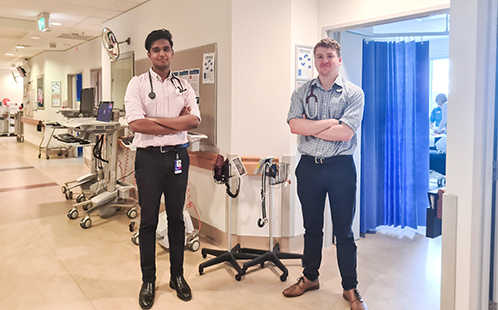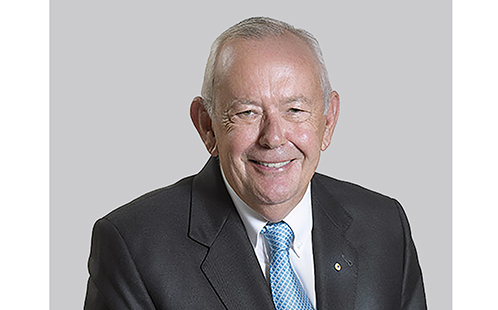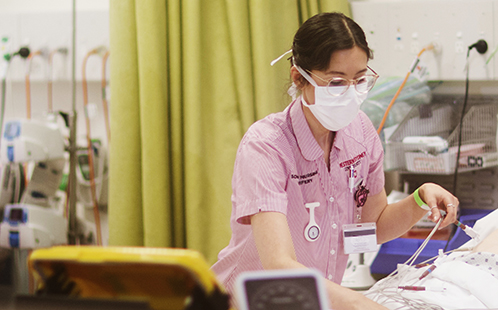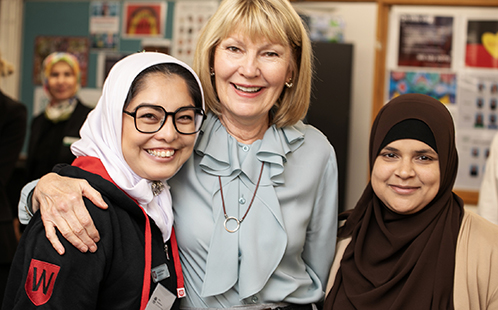Medical education the champion in the fight against COVID-19

Arunan Mahendravarman and George McKay-Goodall at Bathurst Hospital
The threat of COVID-19 prompted medical schools and hospitals to introduce a new model of transitioning medical students into the hospital system. Now that the curve has flattened, the broader benefits are being recognised.
Distinguished Professor Annemarie Hennessy, Dean of the School of Medicine at Western Sydney University, said medical schools and hospitals moved swiftly in the face of the pandemic.
“In response to the needs of the hospitals, we asked our students early on if they would be prepared to fast-track their studies; sit their final exams early; enter an intensive new training program and, potentially, help in the fight against COVID-19 before they formally graduate,” said Professor Hennessy.
“Our students are bright, enthusiastic, and already very knowledgeable – and ultimately, this is what they have been training for. They were overwhelmingly enthusiastic about stepping up to help the cause.”
In just six weeks – with cooperation medical schools, government health services, hospital leaders, students and medical boards – new Assistant in Medicine (AIM) roles were devised to meet the requirements of individual health services.
Professor Ross Wilson, Director of the Rural Clinical School at Bathurst, said the intention of the AIM program was to equip medical students with the skills to assist in treating the acute and chronic care needs of people on the hospital wards, thereby freeing up medical and nursing staff to work in COVID-19 wards.
“Some of the AIMs began their rotations on June 1 – by which time, the curve had already flattened and the need for the students was not as critical,” said Professor Wilson.
“Bathurst Hospital no longer has an active COVID-19 ward, but the AIMs and the rest of the hospital staff are prepared and ready, in case there is a second wave.”
Arunan Mahendravarman is one of 17 students who transitioned from their clinical placements into a new AIM position at Bathurst Hospital.
Arunan said it was initially a challenge to get through his exams with less preparation time – but now that he’s secured an AIM position, he’s relishing the opportunity and is seeing the benefits for his education and training as a doctor.
“Usually, medical students on placement rotate through a number of specialties – but in AIM, we are given the opportunity to really focus on General Medicine for an extended period of time,” said Arunan.
“It is a really great training ground for us, to put our theory into practice and get a feel for how hospitals really operate.”
Professor Wilson said the threat of COVID-19 forced medical schools and hospitals to swiftly enact this new opportunity, to stage the transition from medical student to doctor.
Professor Wilson said AIM is beneficial for the students, in that they are effectively hired by the hospital; have a paid position of employment; and are rostered on to shifts, like they would as an intern.
“We can see now, that the benefits of the program extend much further beyond COVID-19. It is a model for training our medical students that we will be seriously looking at exploring into the future.”
ENDS
16 June 2020
Photo: Supplied
Latest News

Western Sydney University receives transformational donation to support LGBTIQA+ community
Western Sydney University has welcomed a philanthropic donation from The Brennan Lynch Foundation.

Western Sydney University ranks among world’s best for 23 subjects
The University has been named as one of the world’s top universities for the study of 23 subjects in the latest edition of the QS World University Rankings by Subject, including being ranked in the top 50 for Nursing.

Western Sydney University receives landmark $7.9 million philanthropic gift from Harvey Norman to launch leadership academy, empowering young women in Western Sydney
Western has welcomed a landmark donation to establish the Harvey Norman® Young Women’s Leadership Academy Led by Katie Page.
Mobile options:

